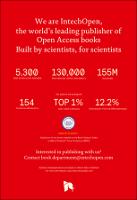Chapter Management of Wine Aroma Compounds: Principal Basis and Future Perspectives
Author(s)
G. Pereira, Antia
Jesus, Simal-Gandara
Maria, Fraga
Paula, Garcia-Oliveira
Maria, Carpena
Cecilia, Jimenez-Lopez
Catarina, Lourenço-Lopes
Lillian, Barros
C.F.R. Ferreira, Isabel
Angel, Prieto
Language
EnglishAbstract
Wine’s aroma is defined by volatile and non-volatile compounds that contribute to its make-up. The complex variety of volatile compounds, coming from grapes, interact with other non-volatile substances of the wine as precursors of wine’s aroma, known as primary aromas, which give the aroma of the young wine. The volatile compounds present in the skin and in the grape juice change according to the grape variety. Most of wine volatile compounds responsible for aroma are linked to sugars and they initially form odorless glycosides. Through the process of hydrolysis, they are reverted into an aromatic form. Chemical reactions among these compounds occur during the fermentation and in the first months of a wine’s existence, triggering fast and multiple modifications in wine’s aroma at this point. As wine ages and matures, changes and development in aroma will continue to take place but at a slower and more gradual pace. The study of the compounds responsible for aroma and flavor, as well as their correlation with the wine quality, is ongoing. Improving the knowledge of wine aromatic compounds could increase the risk of its potential adulteration; however, consumers prefer wine for its natural origin, so this scenario is unlikely in the future.
Keywords
wine, aroma, compounds, grapes, volatileDOI
10.5772/intechopen.92973Publisher
InTechOpenPublisher website
https://www.intechopen.com/Publication date and place
2020Classification
Agricultural science


 Download
Download